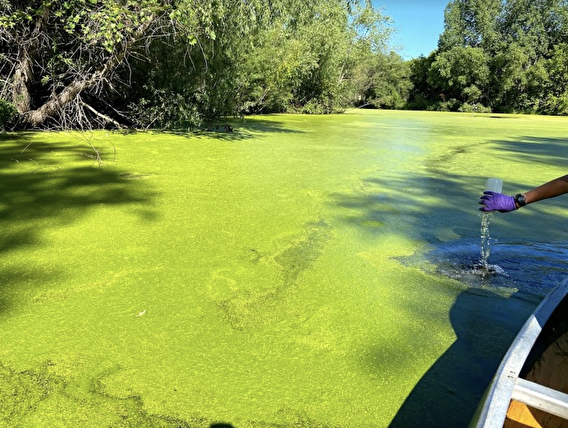
Retention ponds are an important tool for stormwater treatment. When they work, they sequester pollutants that would otherwise be washed into Minnesota’s waterways. However, these ponds lose functionality over time if they aren’t maintained properly.
Researchers from the U’s St. Anthony Falls Laboratory conducted a study aimed at finding pond maintenance strategies that are both effective and cost-effective for local planning agencies. Funded by the Minnesota Local Road Research Board, the study built on previous research and put special emphasis on preventing phosphorous pollution.
Stormwater retention ponds are designed to mitigate pollutants such as phosphorus by catching runoff before it enters a waterway and settling pollutants associated with particles into the sediment at the bottom of the pond.
“There is increasing evidence, however, that many ponds may no longer be providing the water-quality benefits of the original design,” says John Gulliver, principal investigator for the project and professor in the Department of Civil, Environmental, and Geo- Engineering.
Older ponds eventually fill up with sediment and lose their ability to sequester pollutants, Gulliver says. In some cases—particularly when the pond has low levels of dissolved oxygen—phosphorus will re-release into the water. This, in turn, can cause harmful algae blooms. Traditionally, this has been dealt with by dredging, which is labor-intensive and costly.
“Since ponds are part of the watershed network that delivers runoff containing phosphorus into lakes and streams, it is critical to develop effective approaches to maintain them,” he says.
After collecting field data at ponds across Minnesota and running the data through models, several effective treatment strategies emerged from the study. Treating a pond’s sediment with alum and iron filings (which capture mobile phosphate) proved to be especially cost-effective in older ponds that have already developed low-oxygen, high-phosphorous conditions.
Mechanical aeration is also effective under these conditions, Gulliver says. Water bodies are typically kept oxygenated by the process of “wind mixing”—the wind roughens the water’s surface, allows oxygen transfer, and mixes temperature and chemical gradients. The researchers found that retention ponds tend to be poorly mixed by the wind (possibly because they are well-sheltered and have too little surface area for the wind to pick up speed), and the process needs to be helped along by underwater pumps.
Iron-enhanced sand filters were also found to be effective. However, the researchers recommend placing them only at the outflow point of the pond, since bordering the entire pond with a filter would quickly become cost-prohibitive.
In newer ponds, where the goal is prevention, the researchers recommend making alterations to the watershed itself. Installing infiltration practices and conducting street sweeping can catch phosphorus before it ever enters the pond.
“This modeling exercise showed that using certain redesign or maintenance measures can return failing stormwater ponds to their intended water quality performance,” Gulliver says.
“This work resulted in a powerful tool, with quantified benefits for cities and counties to manage retention ponds more cost-effectively,” says Patrick Sejkora, water resources engineer with the City of Eden Prairie and the project’s technical liaison.
Future studies will expand the scope of the research, Gulliver adds.
Writer: Sophie Koch


